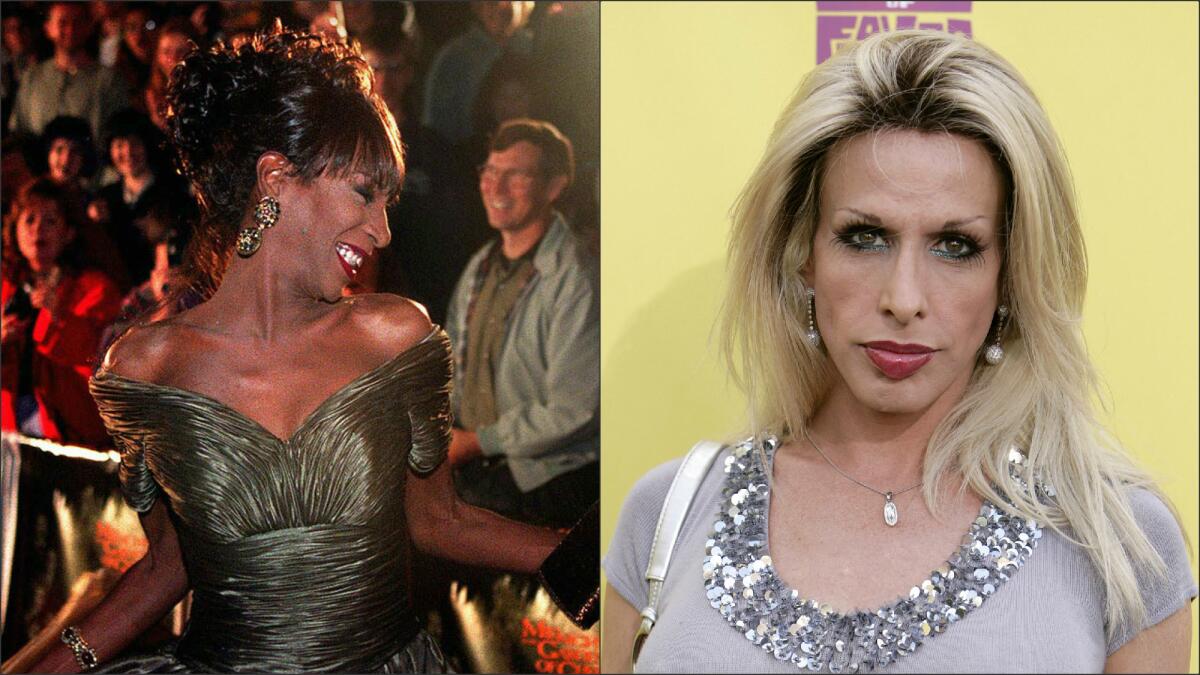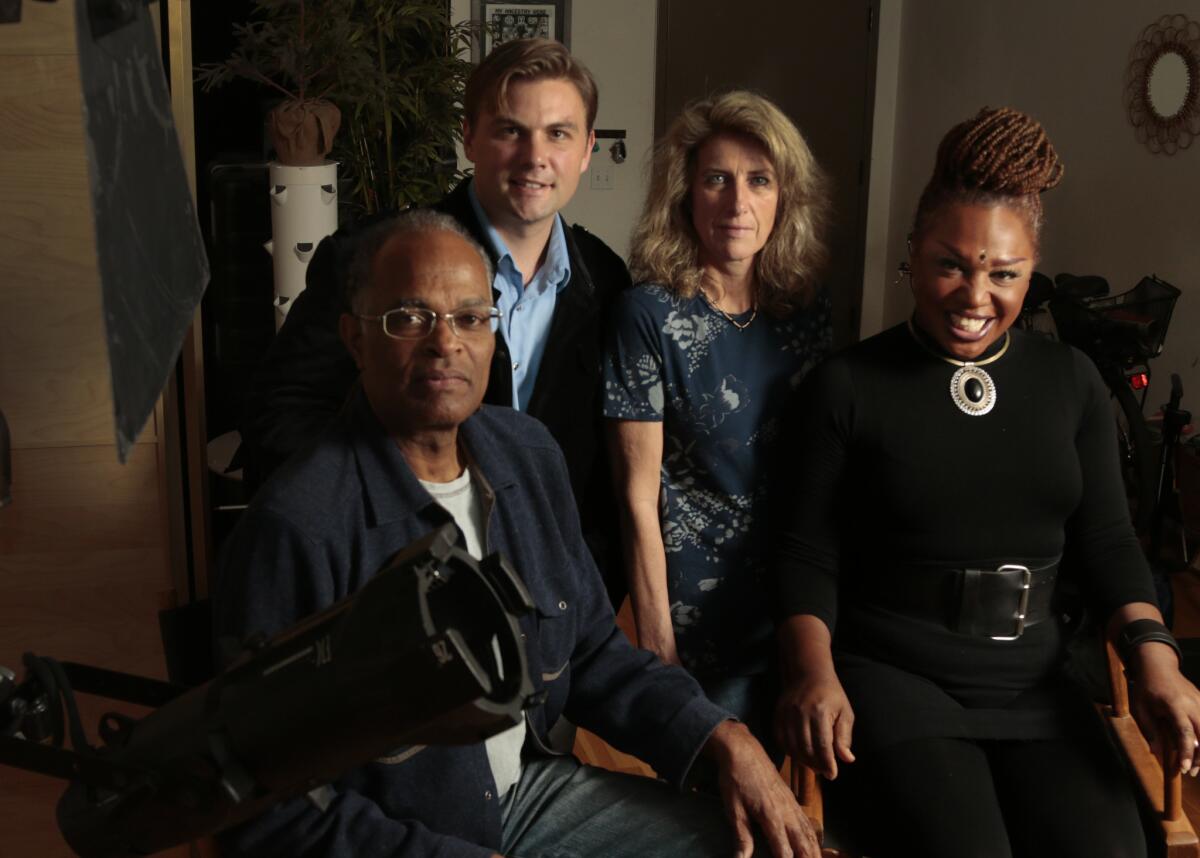Appreciation: How Alexis Arquette and the Lady Chablis paved the way for Hollywood’s transgender moment

The current prevalence of transgender people in the media — from actress Laverne Cox and former Olympian-turned-reality star Caitlyn Jenner to author Janet Mock and model Laith Ashley — represents a landmark moment in pop culture. Never have trans people garnered so much mainstream attention in what some have called “the transgender tipping point.”
Yet the recent deaths of transgender pioneers the Lady Chablis and Alexis Arquette are a reminder of how far the transgender community, and society as a whole, has come in a short period of time.
“Both of their decisions to tell their stories absolutely helped move the culture toward a place today where trans people can interact with the media and tell their stories without being subjected to invasive questions or labels with which they themselves don’t identify,” says Nick Adams, director of transgender media for GLAAD. “[The Lady Chablis and Arquette] told their stories in a way that had not been done prior to that, even though trans people had always existed.”
The Lady Chablis rose to fame in the 1990s following the release of John Berendt’s 1994 bestseller “Midnight in the Garden of Good and Evil” in which she was its most popular character. She published her autobiography, “Hiding My Candy,” in 1996, and when “Midnight” was turned into a film in 1997 -- directed by Clint Eastwood -- she successfully campaigned to play herself. Though her Hollywood career began and ended with “Midnight,” the book and movie catapulted her to local and cult celebrity status, which she enjoyed until her death on Sept. 8. She was well known as the “Grand Empress of Savannah,” performing at the Georgia city’s Club One since 1988.
Ten years after the Lady Chablis’ rise, Arquette documented her transition in the film “Alexis Arquette: She’s My Brother,” which debuted at the 2007 Tribeca Film Festival. A member of Hollywood’s Arquette family, she had already been a popular actor before her transition, appearing in a number of low-budget and independent films including “Bride of Chucky” and “The Wedding Singer.” Throughout her life she also worked as an art director for clubs, performed as drag queen Eva Destruction and spent several years at Mattel as a toy designer. After transitioning, she became a vocal transgender advocate, which she remained until her death Sunday.
Along with the trans actress Holly Woodlawn, who died last December and was made famous by Andy Warhol, Paul Morrissey and Lou Reed’s “Walk on the Wild Side,” Arquette’s and the Lady Chablis’ performances and acting roles were early representations of openly trans people in Hollywood. The Lady Chablis and Arquette were bona-fide stars, a “mind-blowing” feat, says Jazzmun Nichcala Crayton, a transgender activist and actress who was in “The 40-Year-Old Virgin” and “Punks.”
“They opened doors and kept doors open so that the rest of us can continue to walk through them,” she says. “They did their job and did it so well that it allowed people to start thinking about us, putting us on their radar. They did it so well that they brought a joy, dignity and pride to being a person of trans experience.”
Crayton remembers seeing the Lady Chablis on “Entertainment Tonight” around the time the film premiered. Her only thought: “Oh, my God. This is beautiful.”

They opened doors and kept doors open so that the rest of us can continue to walk through them.
— Jazzmun Nichcala Crayton
It must be noted that the Lady Chablis was a black trans woman in the South, someone living at the intersection of varying identities, which even today makes folks targets of racist and transphobic violence. Crayton, who is also black, says that the Lady Chablis is an example of what she means by wanting “everybody standing supreme in their light, honing in on it and owning it.”
Arquette was also iconic, Crayton adds, because she continually transgressed gender and sexuality in her personal and professional lives. She often played LGBT characters in films like 1994’s “Threesome” and 1998’s “The Wedding Singer” and in her last days lived her life as a man.
Adams highlights that while the Lady Chablis and Arquette’s existence in more restrictive times were important, societal perception and lack of understanding didn’t make it easy. For example, the Lady Chablis was referred to on multiple occasions as “a full-time transvestite” or “a preoperative transsexual,” terms that today would be considered inaccurate and offensive. Additionally, when Arquette was making press rounds for her documentary, journalists asked inappropriate questions about her body and surgical procedures. She was visibly upset on numerous occasions, Adams remembers.
“Both of them were not well served by the media at the time,” he says, “because their stories were complex in a way that journalists and the American public were not really ready to understand.”
Only recently, following a 2014 interview with trans model Carmen Carrera and Laverne Cox on Katie Couric’s talk show, have questions from journalists about the bodies of trans people subsided and an understanding of trans identity become more nuanced. This, Adams says, is evidence of how far trans representation — and how the world responds to it — has come.
For Angelica Ross, star of the Emmy-nominated Web series “Her Story” and one of the industry’s newest openly trans talents, the examples set forth by the Lady Chablis in particular, but also Arquette and other trans folks who have paved the way, “will not be forgotten in the progress that has been made.”
She does however hope the world will begin “to recognize and honor and uplift these folks while they’re living.”
Get your life! Follow me on Twitter: @TrevellAnderson.
More to Read
Only good movies
Get the Indie Focus newsletter, Mark Olsen's weekly guide to the world of cinema.
You may occasionally receive promotional content from the Los Angeles Times.









